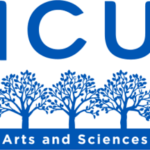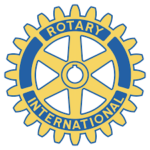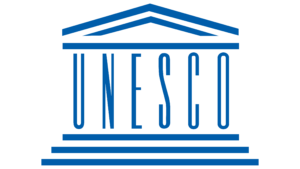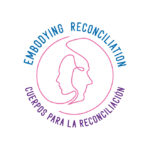Pacific Region: Heritage
The Pacific Heritage, a photographic exhibition.
The keys of the marimba announce a caravan of black bodies swaying towards their resistance. The music of the drums, the rhythm of the bodies, the Afro-ancestral orality resists the passage of time and the diaspora that has travelled for centuries from distant lands to Afro-American spaces, such as the Colombian Pacific.
The diaspora as a safe space against slavery, war, hunger, racism, and the colony … maintains life to the beat of the marimba, the drum and the mystical characters that protect black people from total annihilation, maintaining a fine thread between the absent and the living, a thread that manifests itself in funeral songs and in an oral tradition that does not forget those who passed away.
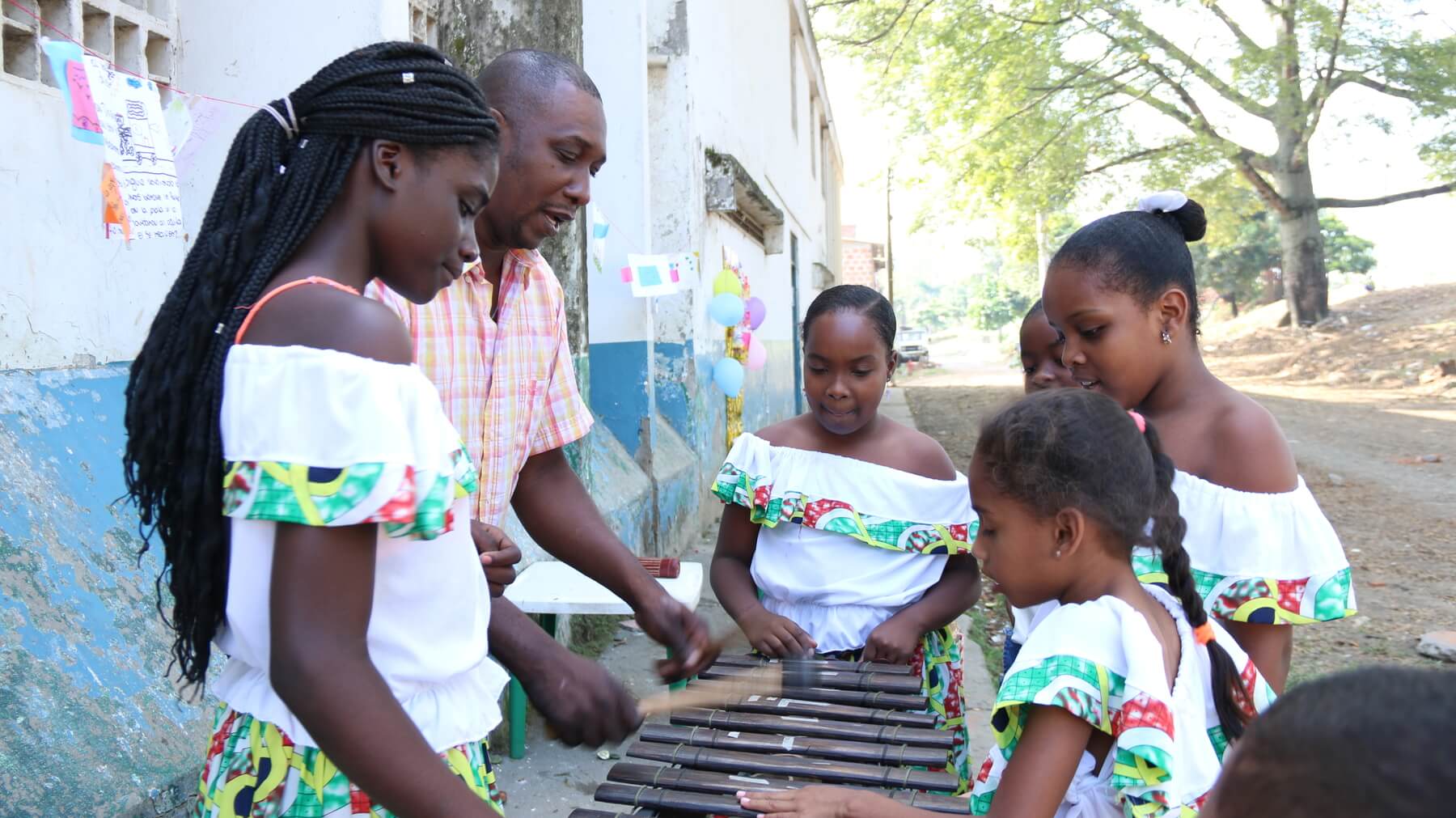
LEARNING TO PLAY THE MARIMBA
The professor Pascual Caycedo teaches the children of the Brisas del Cauca neighborhood in Cali, to play the marimba.
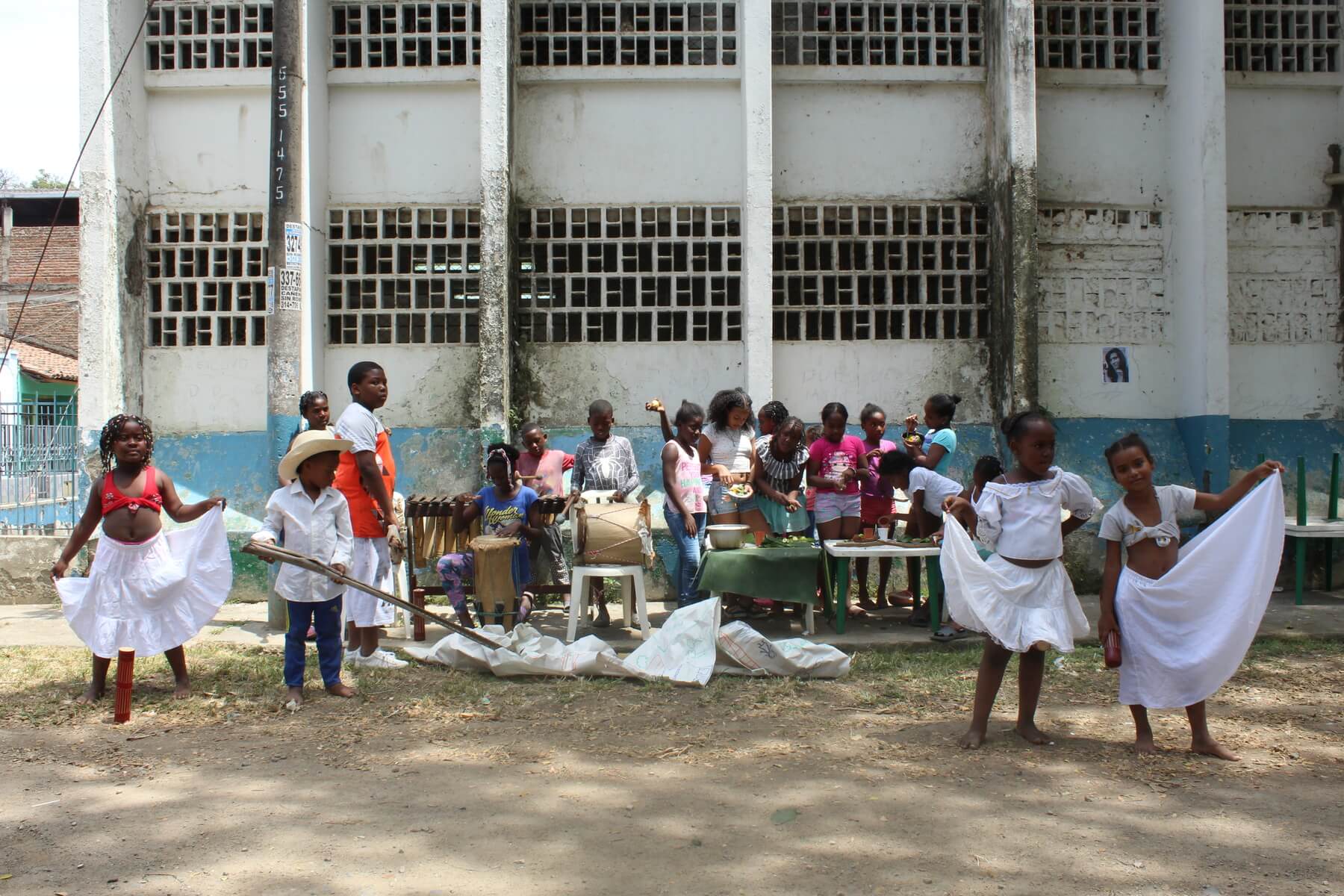
FLAVOURS OF THE PACIFIC
Living Picture by the children of the Brisas del Cauca neighborhood in Cali, representing the traditions of the Colombian Pacific.
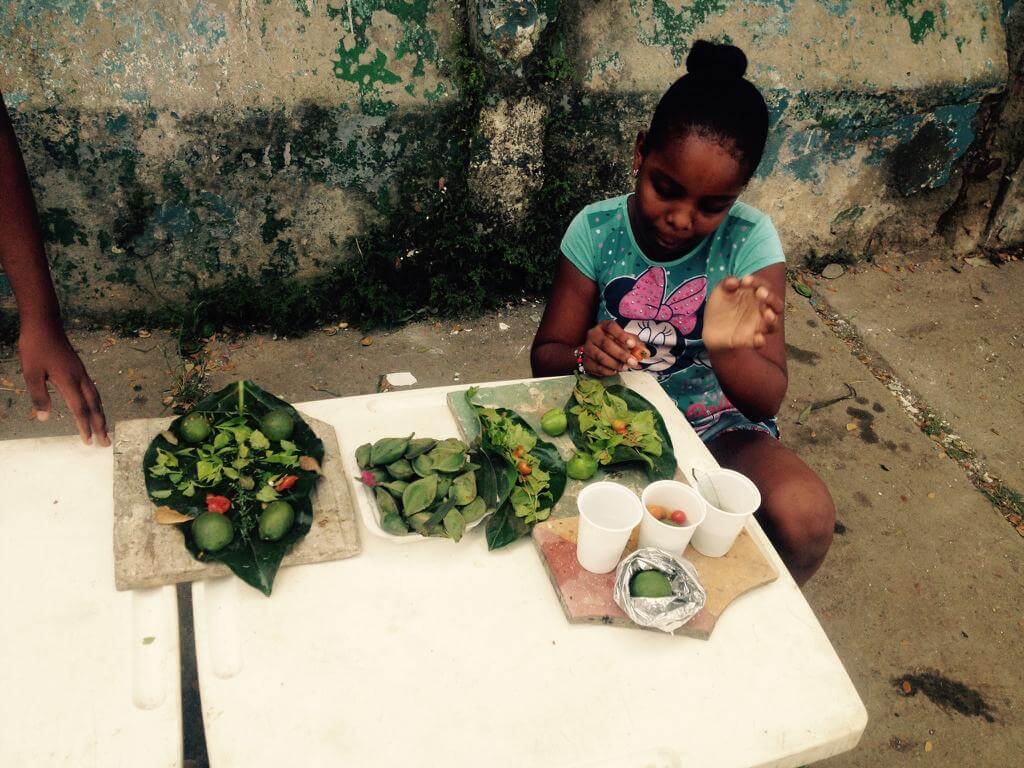
FOOD FROM THE COLOMBIAN PACIFIC
A girl prepares typical dishes from the Colombian Pacific.
Brisas del Cauca neighborhood in Cali.
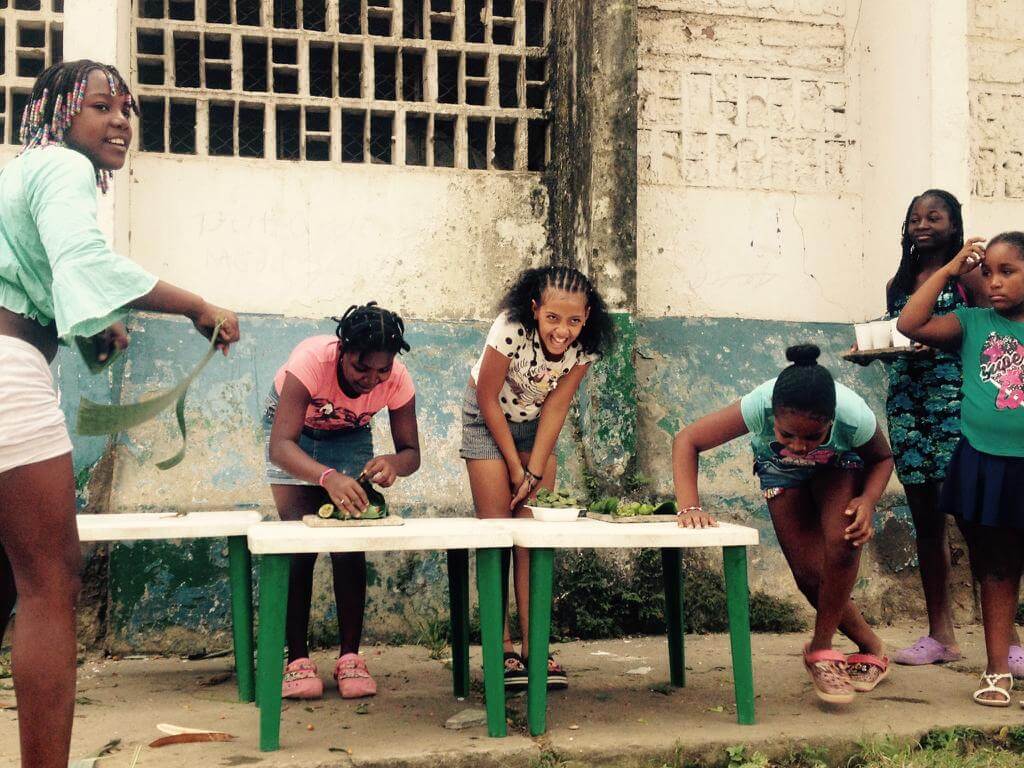
LITTLE COOKS FROM THE COLOMBIAN PACIFIC
Section of the Living Picture “Flavours of the Pacific”.
Brisas del Cauca neighborhood in Cali.
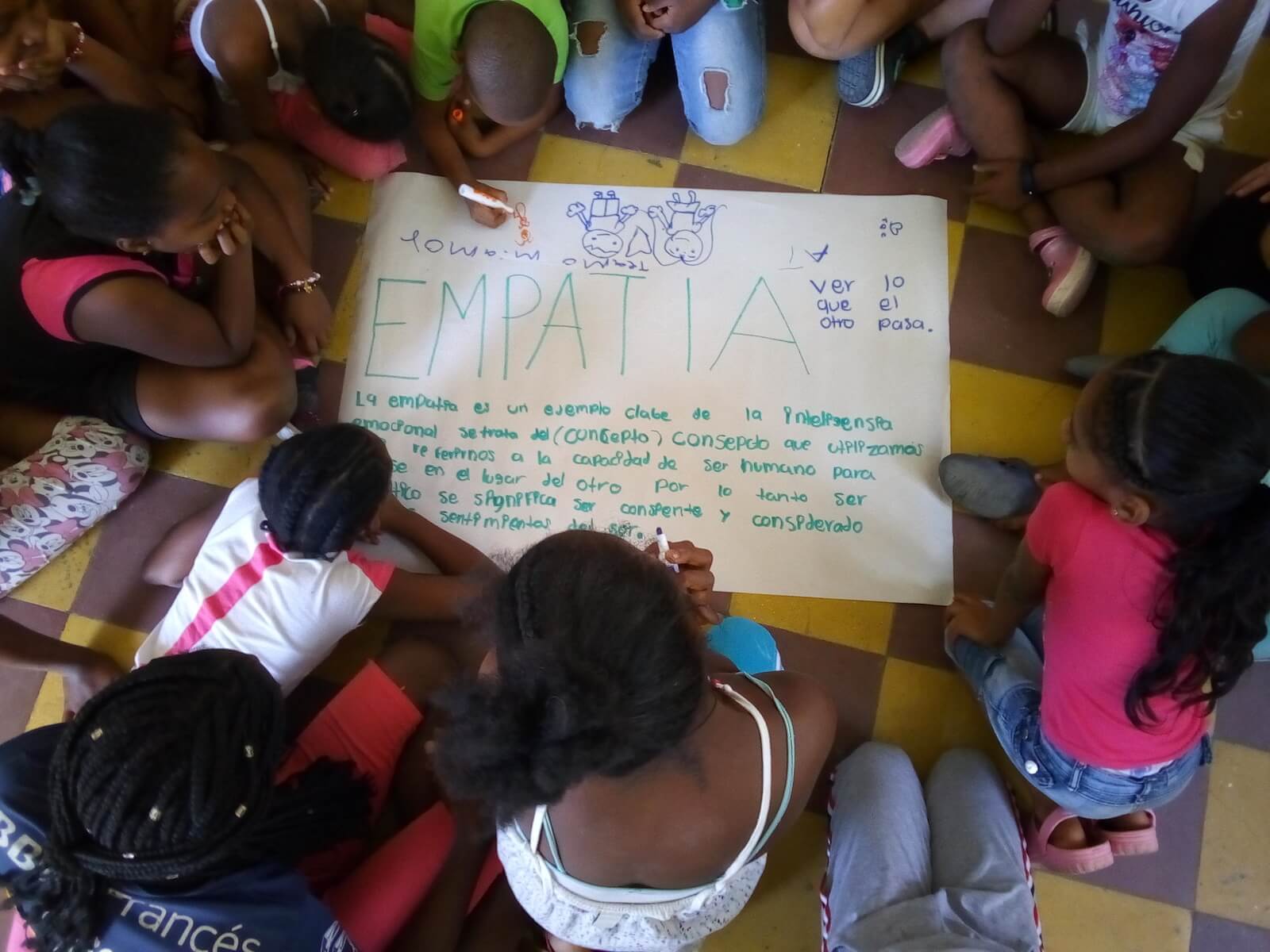
EMPATHY
Workshops regarding embodied empathy with the children of the Brisas del Cauca neighborhood in Cali.
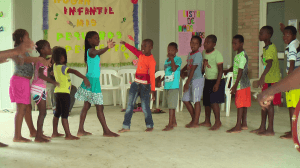
THE CHILDREN FROM THE COLOMBIAN PACIFIC DANCE
In the rural area of Pianguitas, next to the Pacific Ocean, children have fun dancing to the rhythm of Currulao.
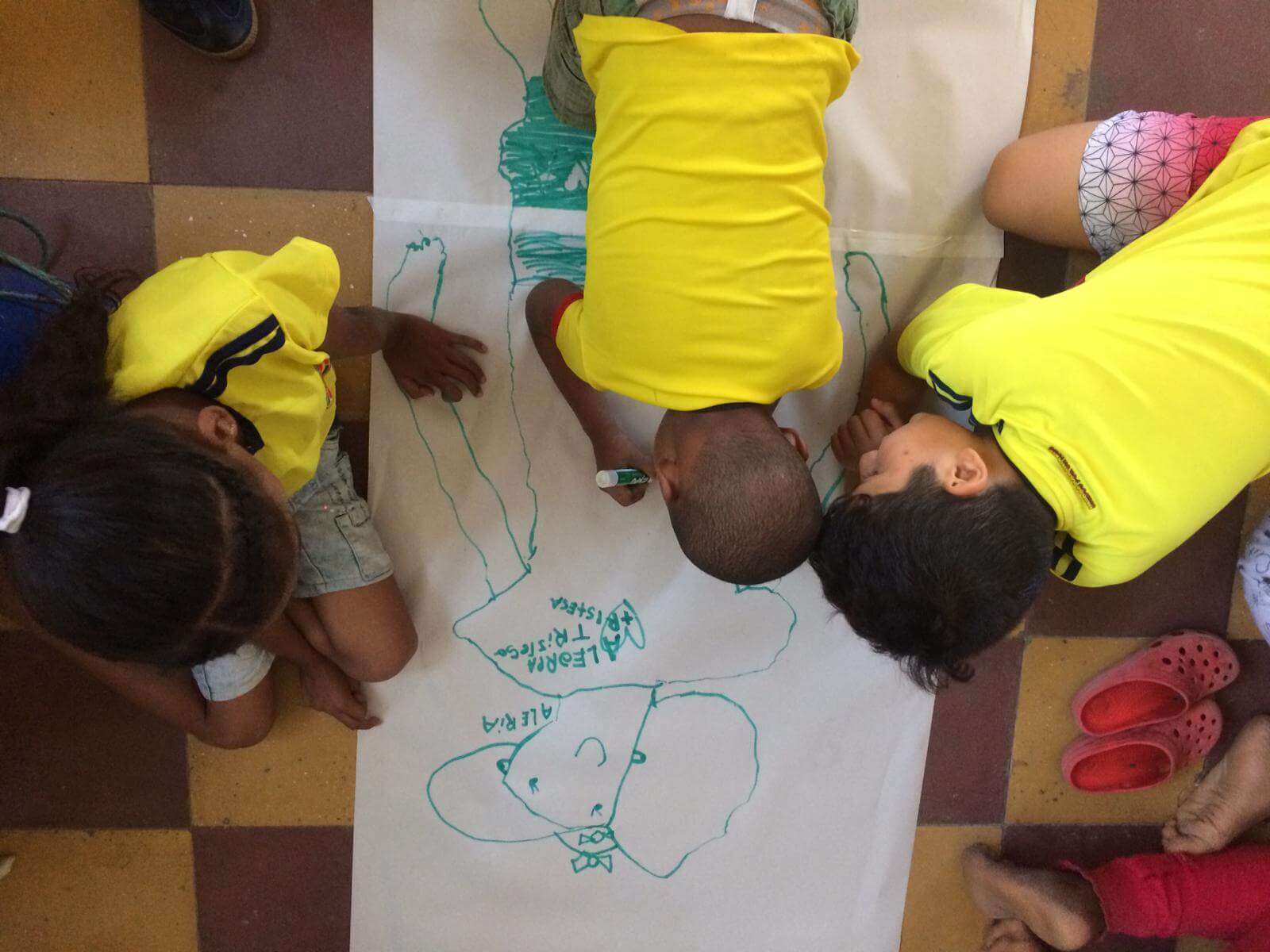
CHILDREN AND BODILY CARTOGRAPHIES
Dynamic of mapping oneself´s body along with the other´s body to identify points of encounter and dissonance.
Brisas del Cauca neighborhood in Cali.
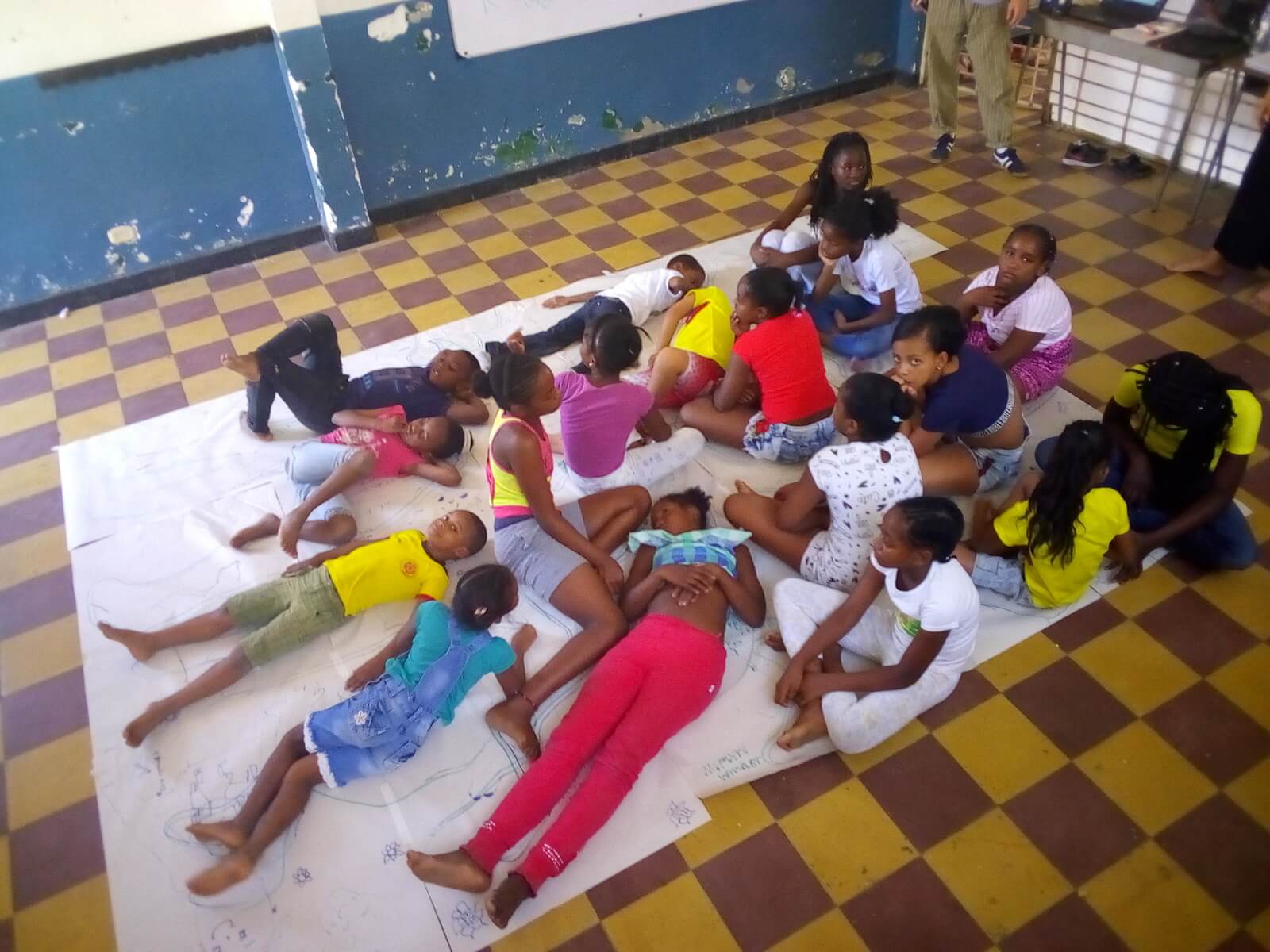
COLLECTIVE BODILY CARTOGRAPHY
Map of the bodies of the boys and girls at the Brisas del Cauca neighborhood in Cali.
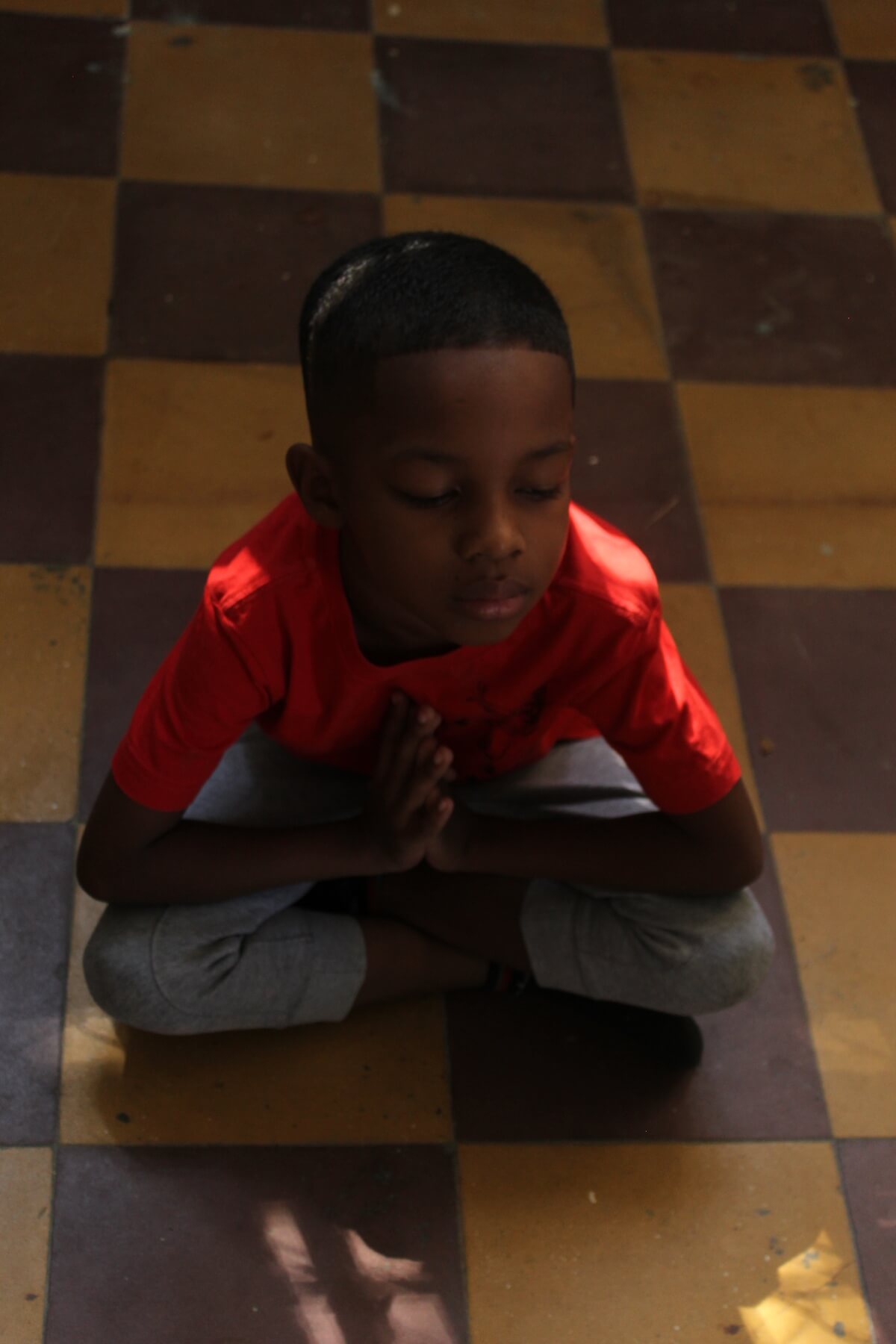
I FIND MYSELF IN THE OTHER
Activity performed in couples to look at the emotions of one another.
Brisas del Cauca neighborhood in Cali.
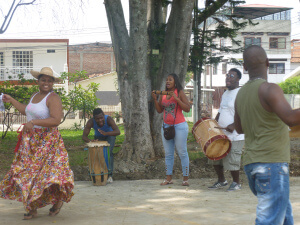
“PURA SANGRE” GROUP
Pascual Caicedo
In the District of Aguablanca the parks are stages for dance and music of the Pacific.
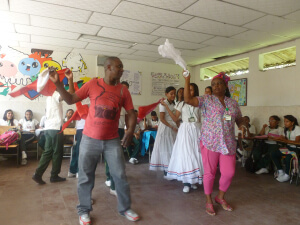
VEREDA EL CARMELO
At the Vereda El Carmelo, Pascual and his partner teach the children to dance Currulao.

EXHIBITION OF THE BODIES FOR EMPATHY MUSEUM IN CALI
Celebration of the final presentation of the training and creative process in the Brisas del Cauca neighborhood in Cali.
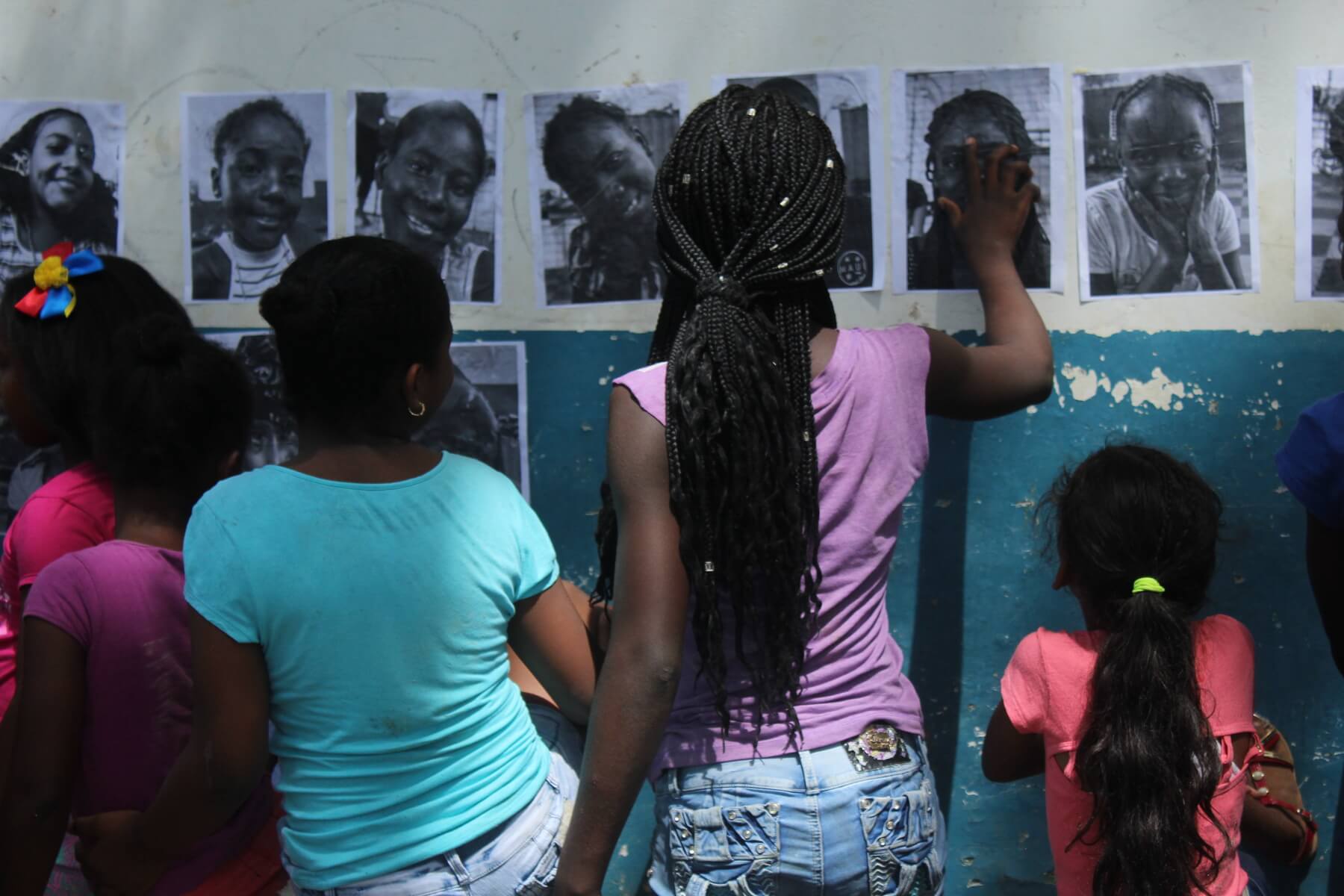
OUR PORTRAITS
The children paste their portraits to decorate the deteriorated walls of their school.
Brisas del Cauca neighborhood in Cali.
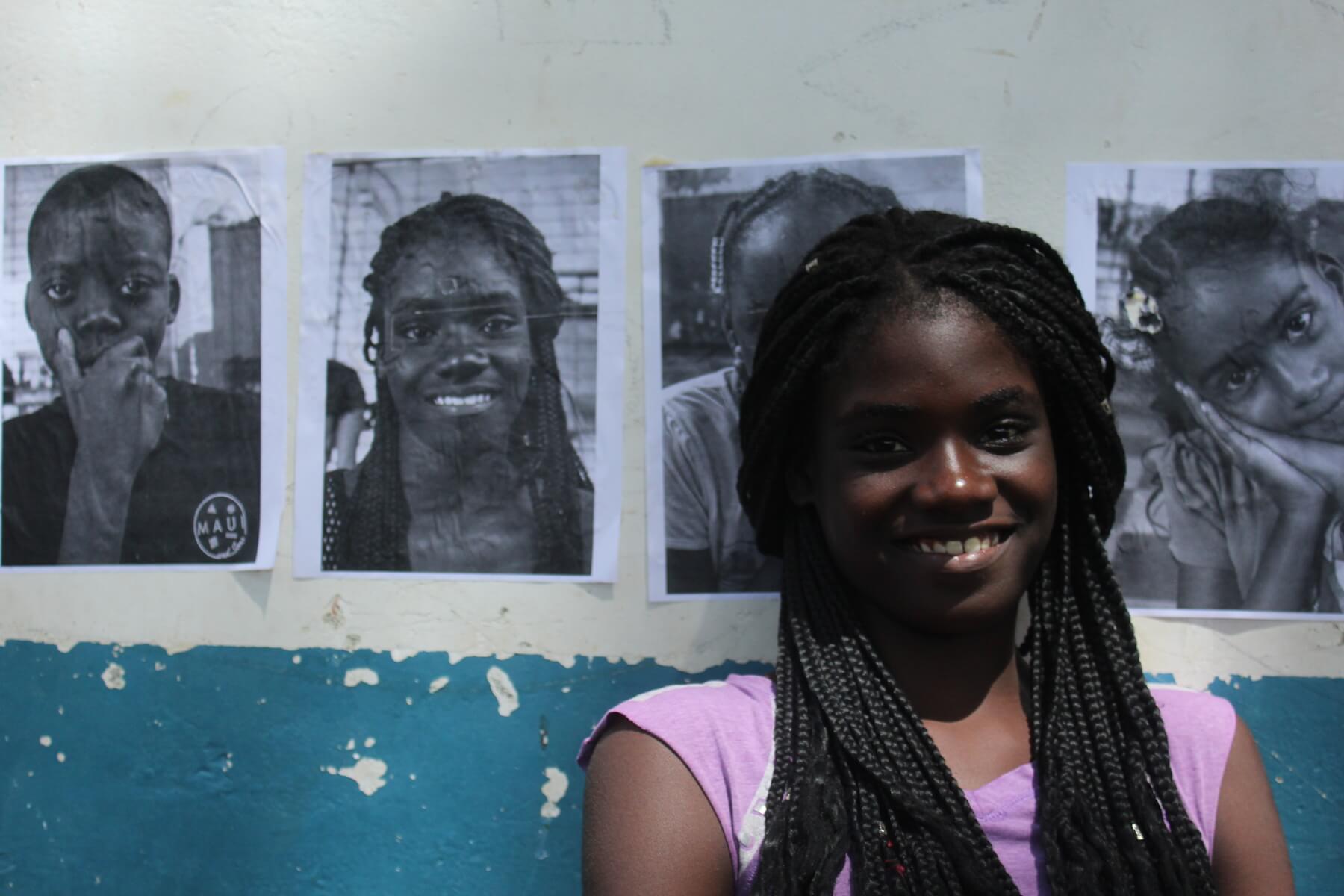
PORTRAIT OF A YOUNG WOMAN
Session to present the Bodies for Empathy Museum in Cali.
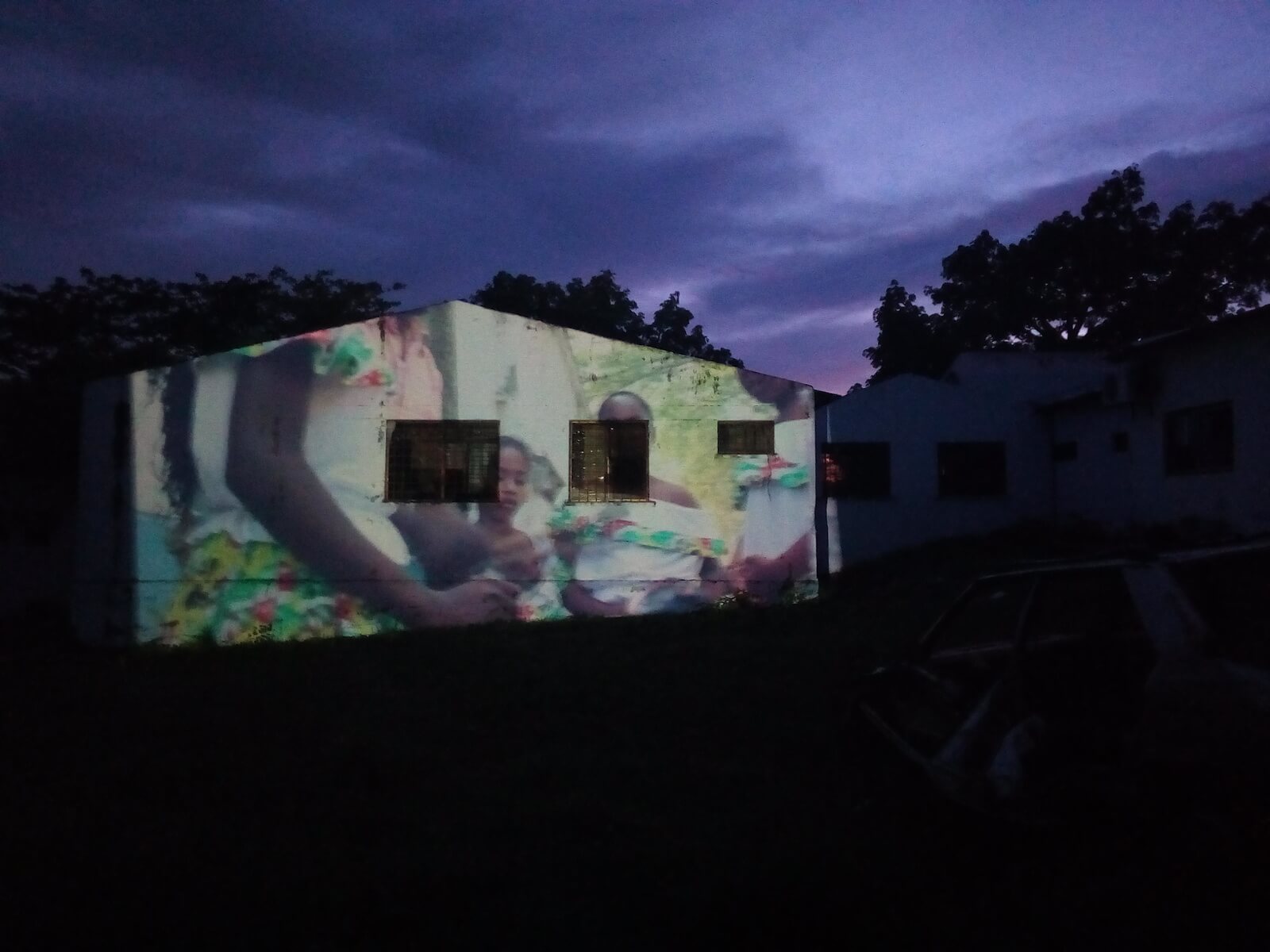
ITINERANT PACIFIC
Itinerant presentation of the Bodies for Empathy Museum in Cali, with children in the Colombian Caribbean.
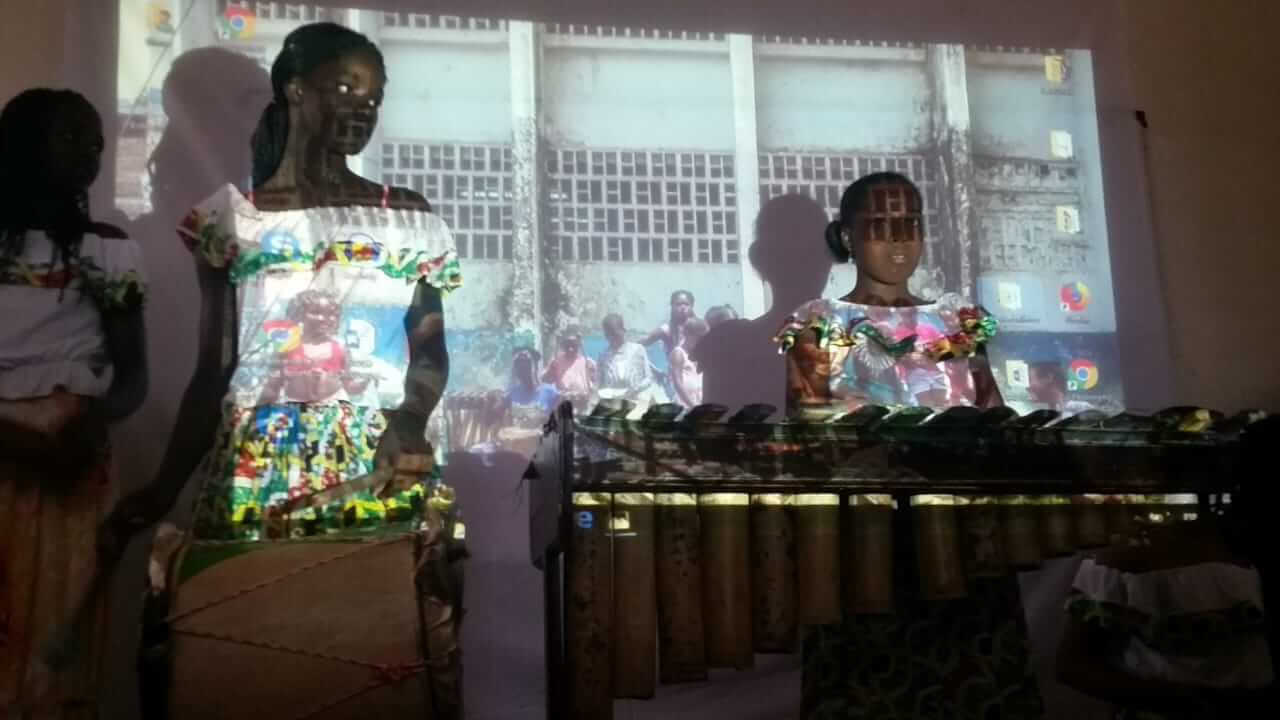
MARIA, MARIA
Presentation session of the Bodies for Empathy Museum, to the rhythm of the song “Maria, Maria…”.
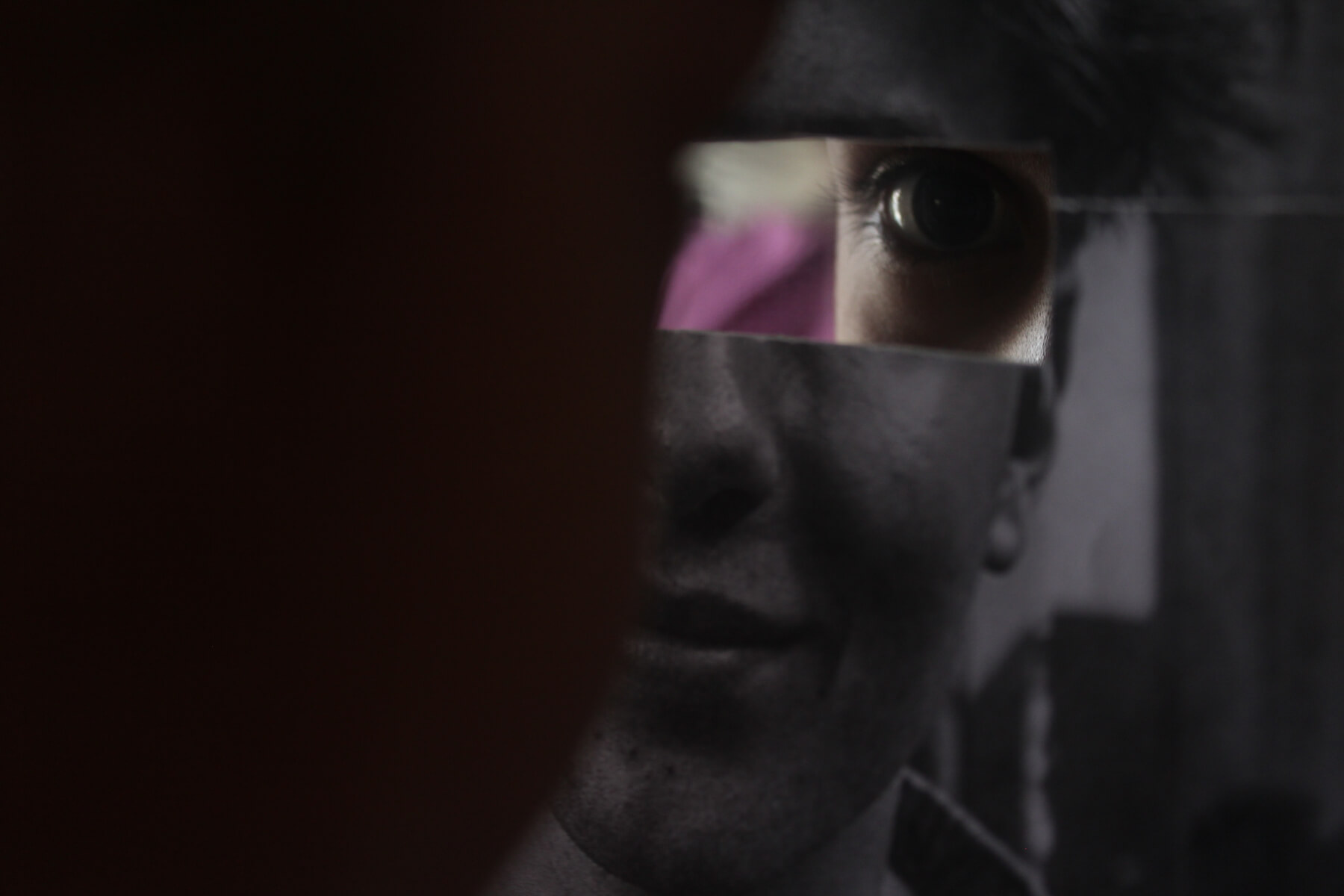
STRANGE GLANCES
Laura Cadena
Workshop “I look at the other” to activate empathy through visual tools.
.
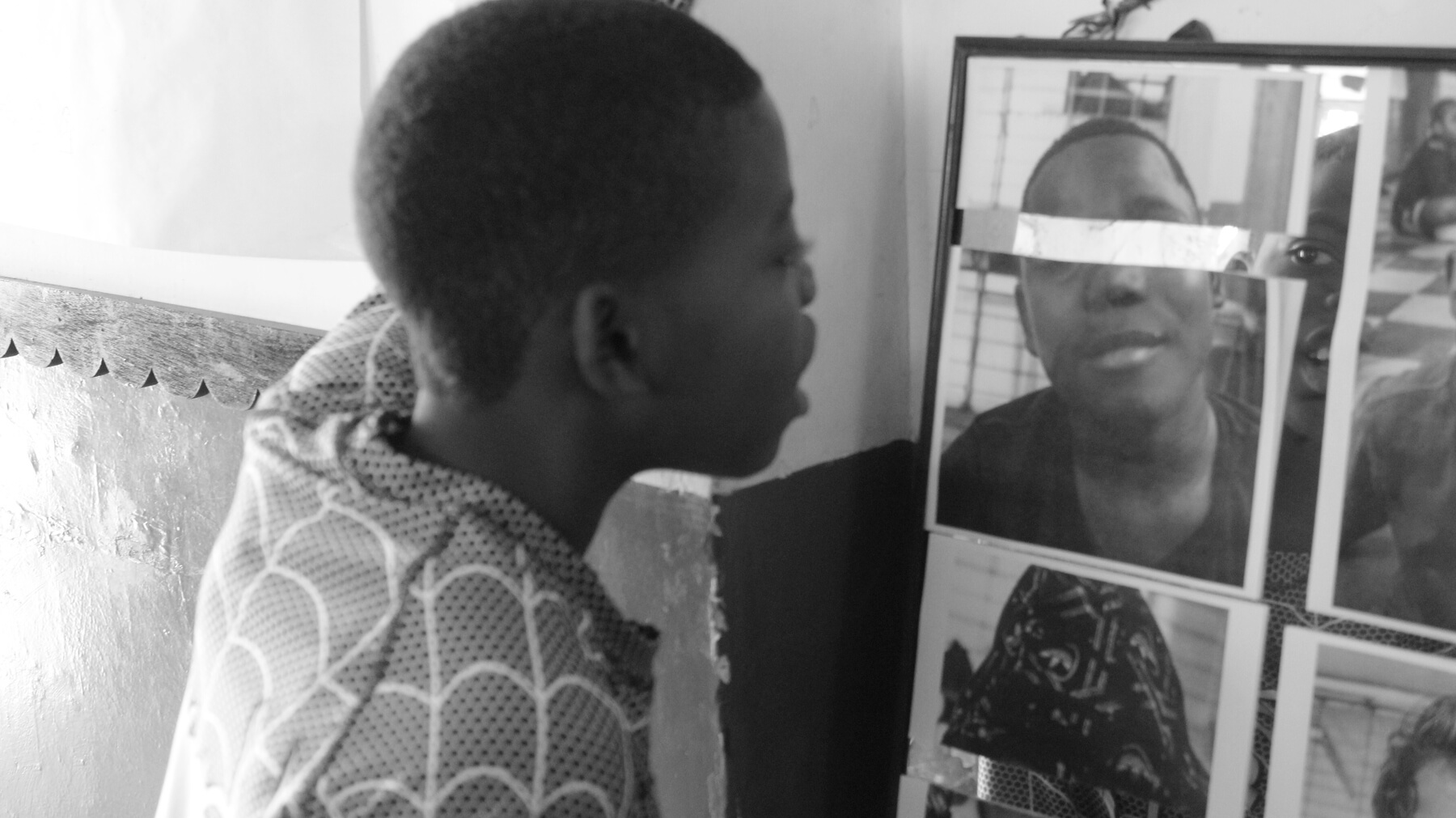
I LOOK AT MYSELF IN THE OTHER
Laura Cadena
Workshop “I look at the other” to activate empathy through visual tools.
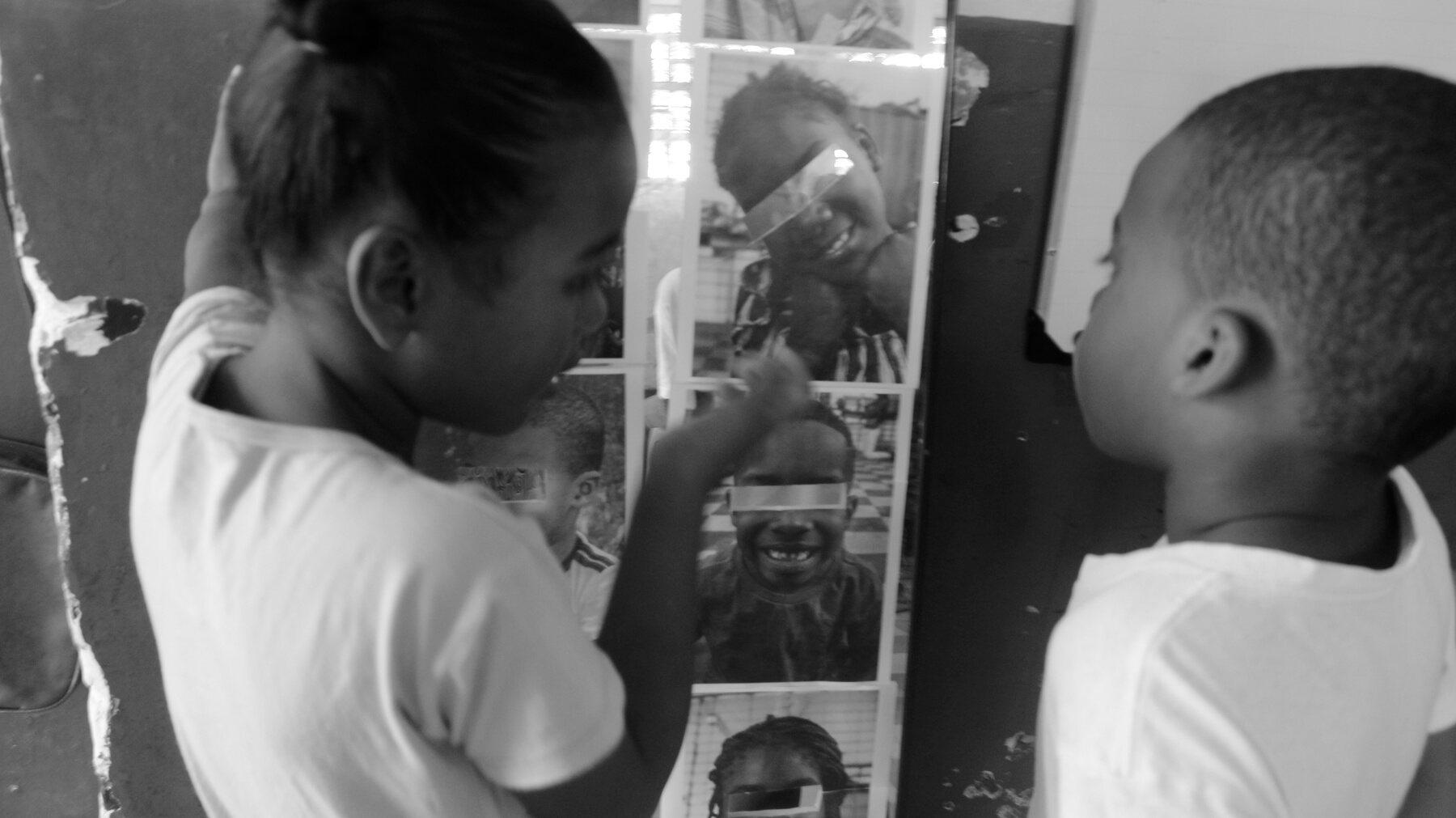
WE SEE OURSELVES IN THE OTHER
Laura Cadena
Workshop “I look at the other” to activate empathy through visual tools.
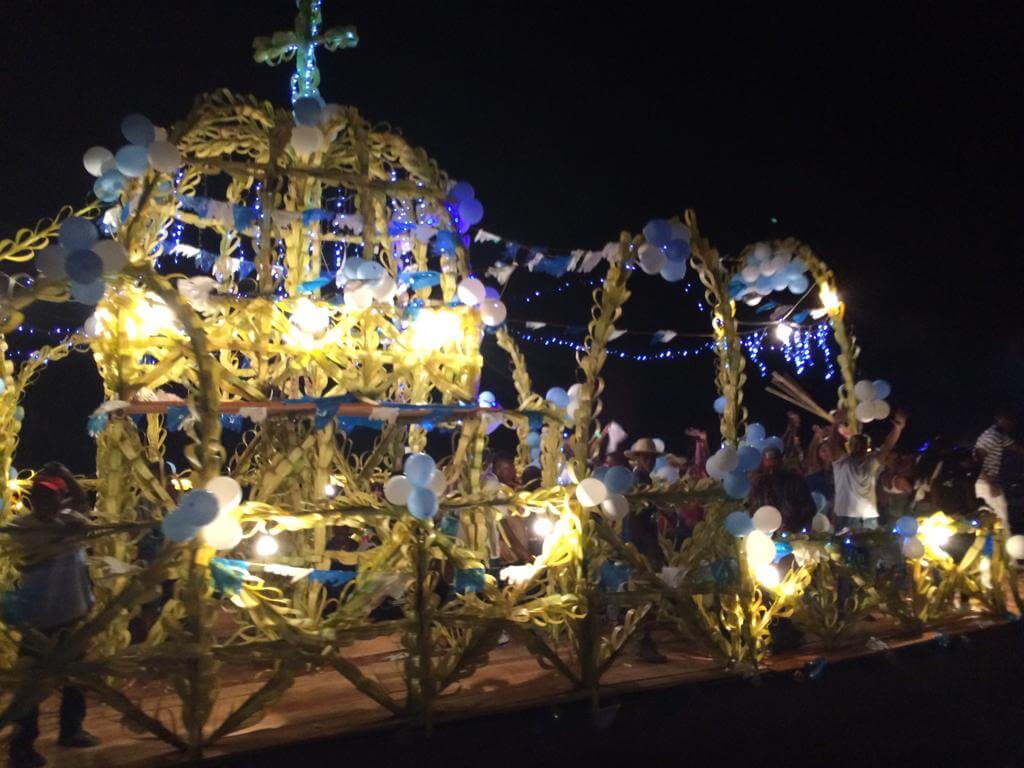
BALSADAS ON THE GUAPI RIVER
Amidst the Patron Saint festivities during the first week of December, the balsadas take place in homage to the saints and the culture of the Colombian Pacific.
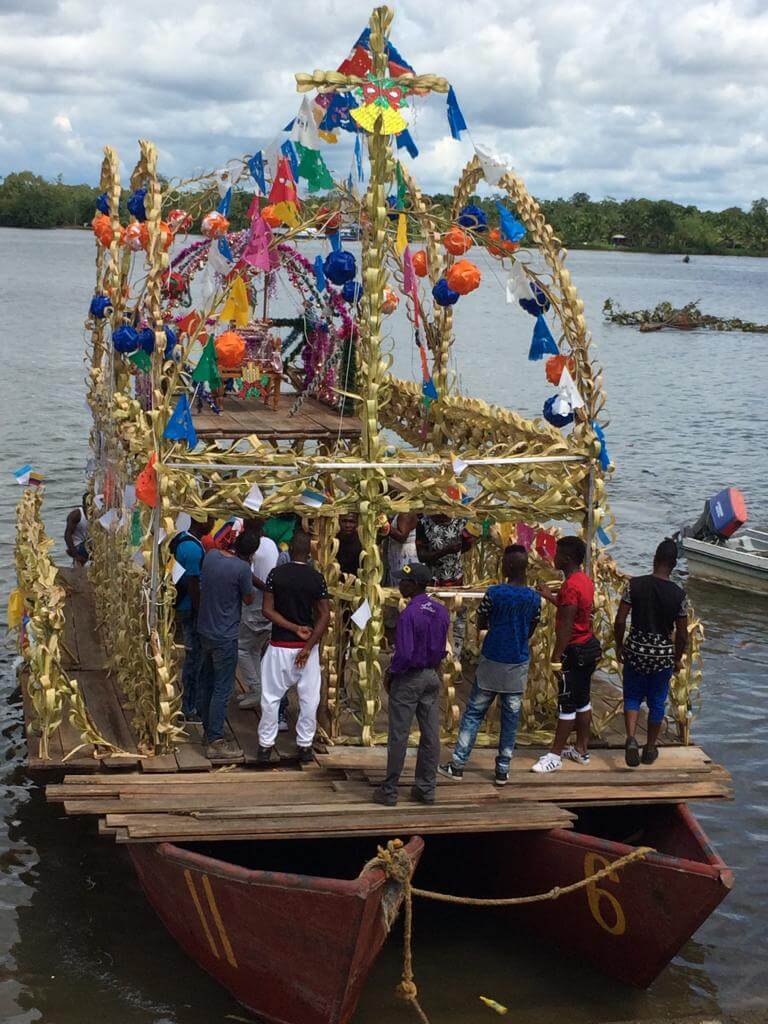
BUILDING THE BALSADAS
Amidst the Patron Saint festivities during the first week of December, the balsadas take place in homage to the saints and the culture of the Colombian Pacific.
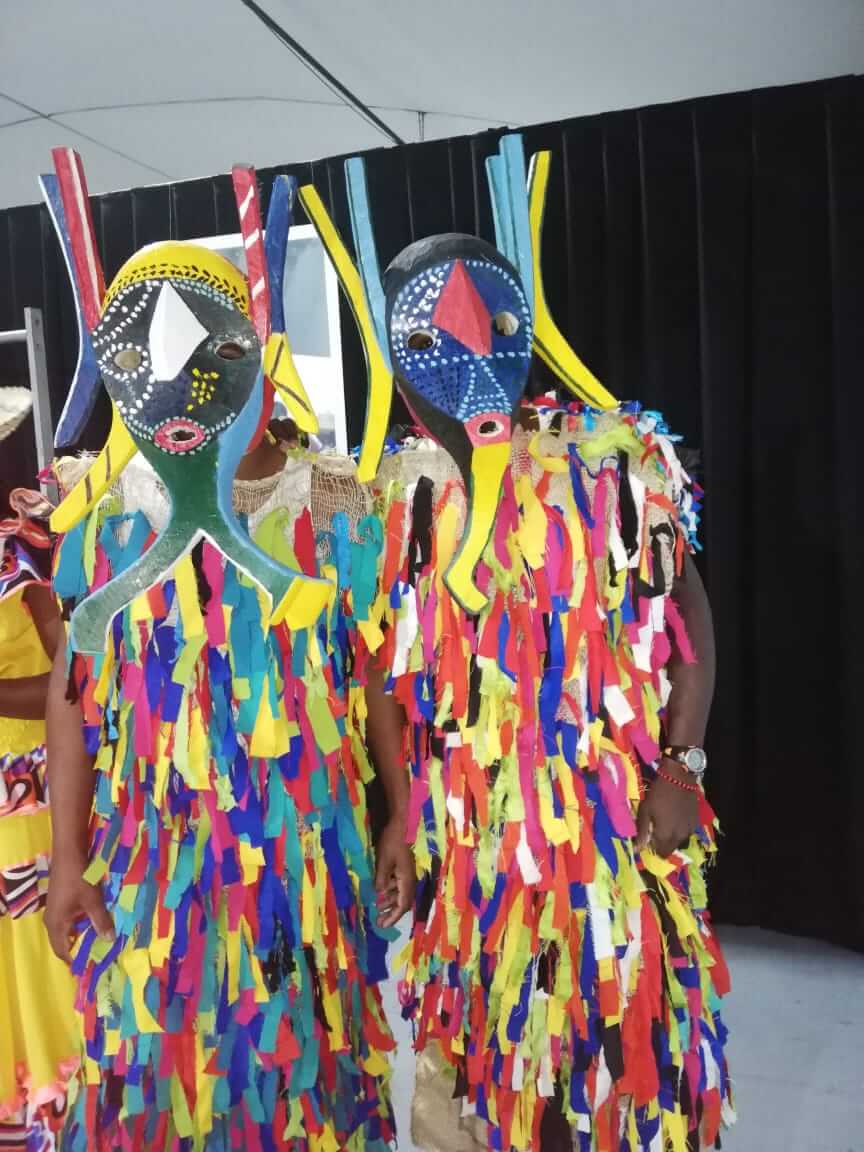
MATACHINES AT YURUMANGUÍ RIVER
On December 28, the day of the Innocent Saints, the community celebrates an ancient practice that is a paradigmatic event for the black peoples of the Pacific: the Matachines. A group of people disguise themselves using native elements and wooden masks that represent the characteristics of African animals and deities.

CIRCLE OF TRUST
Workshops regarding embodied empathy with the children of the Brisas del Cauca neighborhood in Cali.
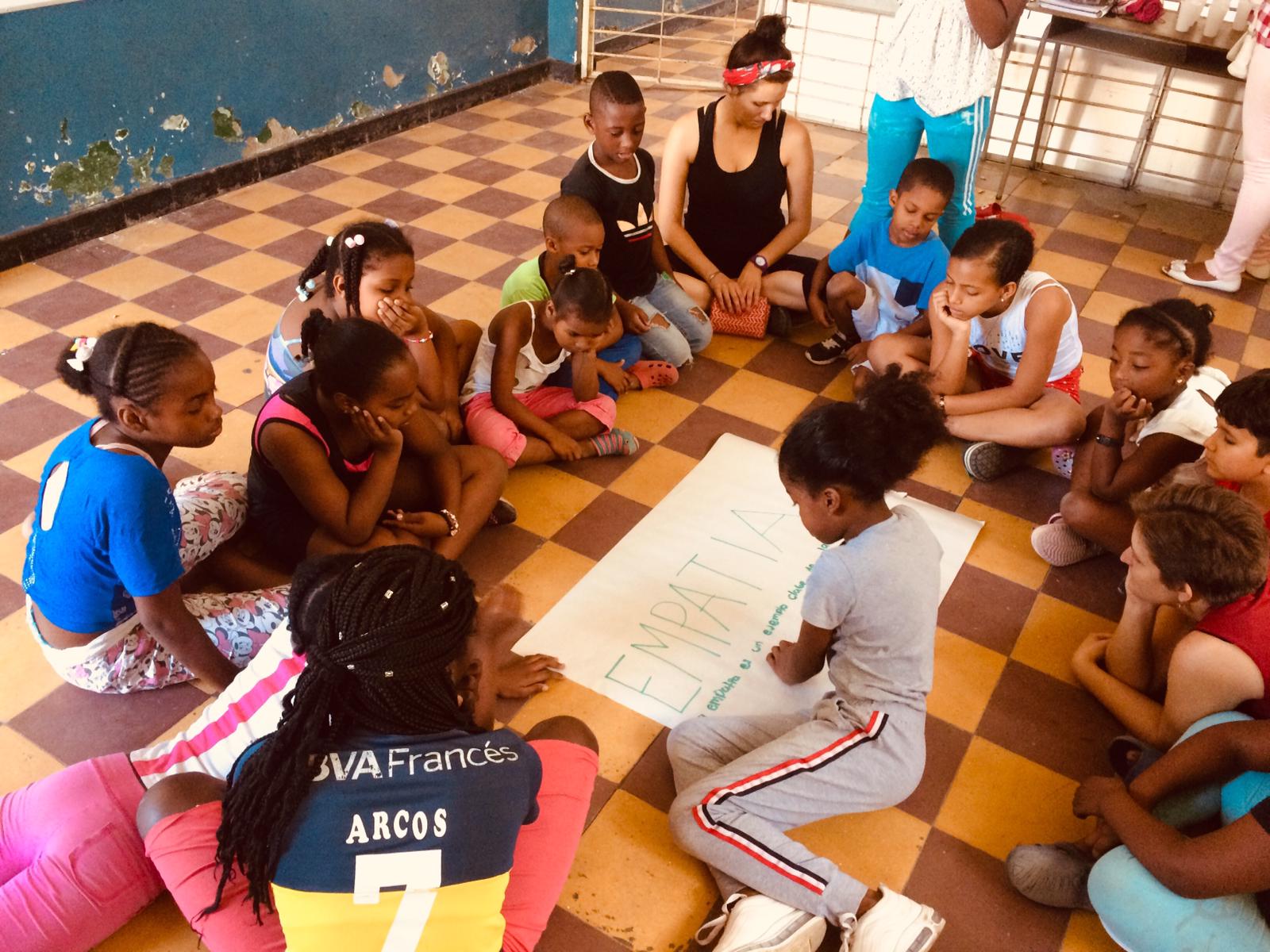
WHAT DOES EMPATHY MEAN?
Collectively defining empathy with the children of the Brisas del Cauca neighborhood in Cali.
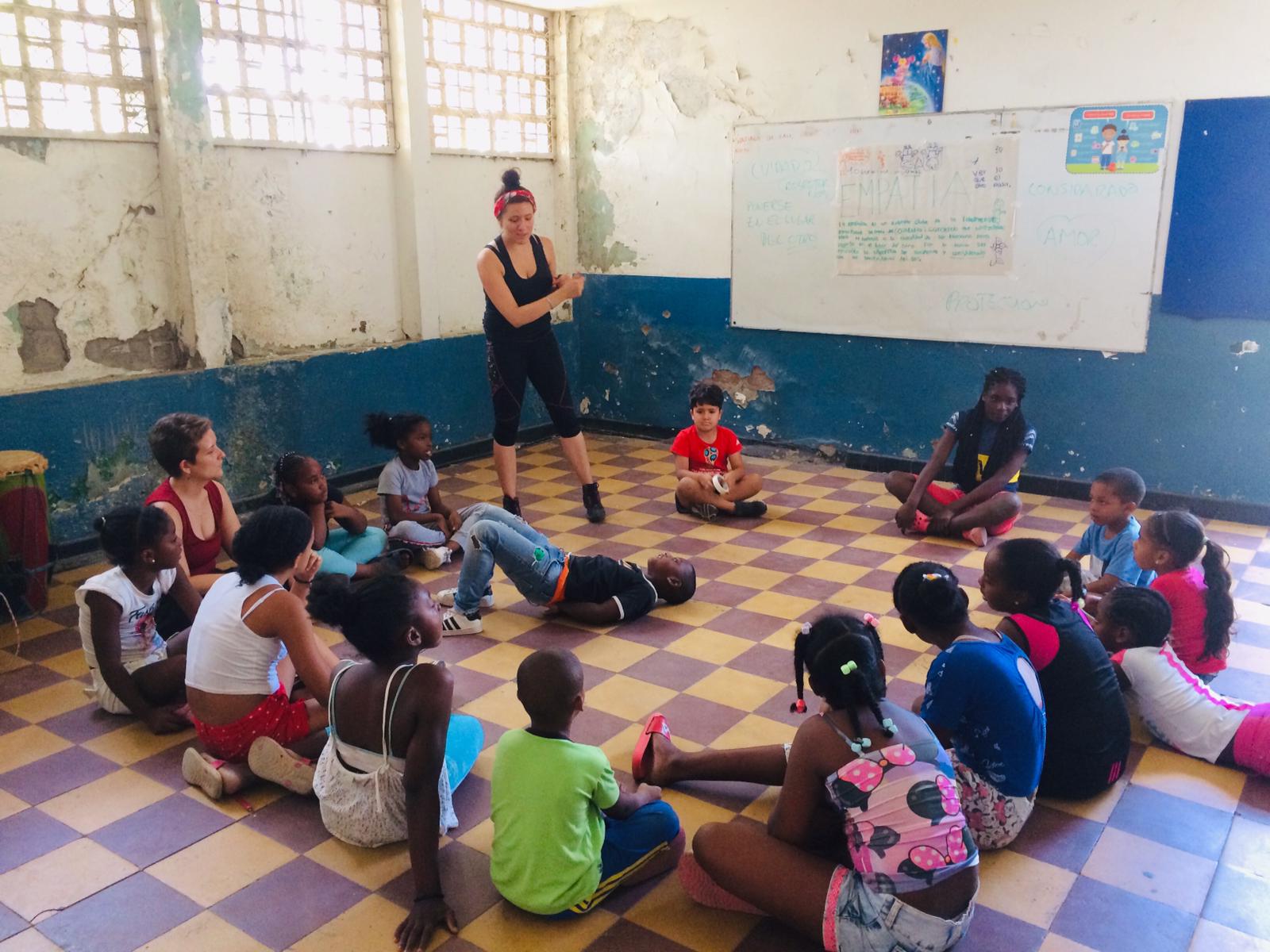
TRAINING PROCESS OF THE BODIES FOR EMPATHY MUSEUM IN CALI
Physical workshops at the Bodies for Empathy Museum in Cali.
The heritage of the Colombian Pacific is a tale about the experience of the black bodies in America. It is a testimony of cultural resistance against forgetfulness and barbarism, about the travel between spaces, displacement, war and death. It is a clamour for the hope of dancing freely and existing in diversity, of justice and dignity regardless of skin colour. Afro-Colombian heritage is a radical sign of life. A drum always survives, it always reverberates like the force that it truly is.
Dolores, Old Bambuco
Yurumanguí, peaceful land
Blackness of mine
Farewell and death of the Christ
Praised: In the name of God, I pronounce

© Copyright 2021 – Museo Cuerpos para la Empatía
